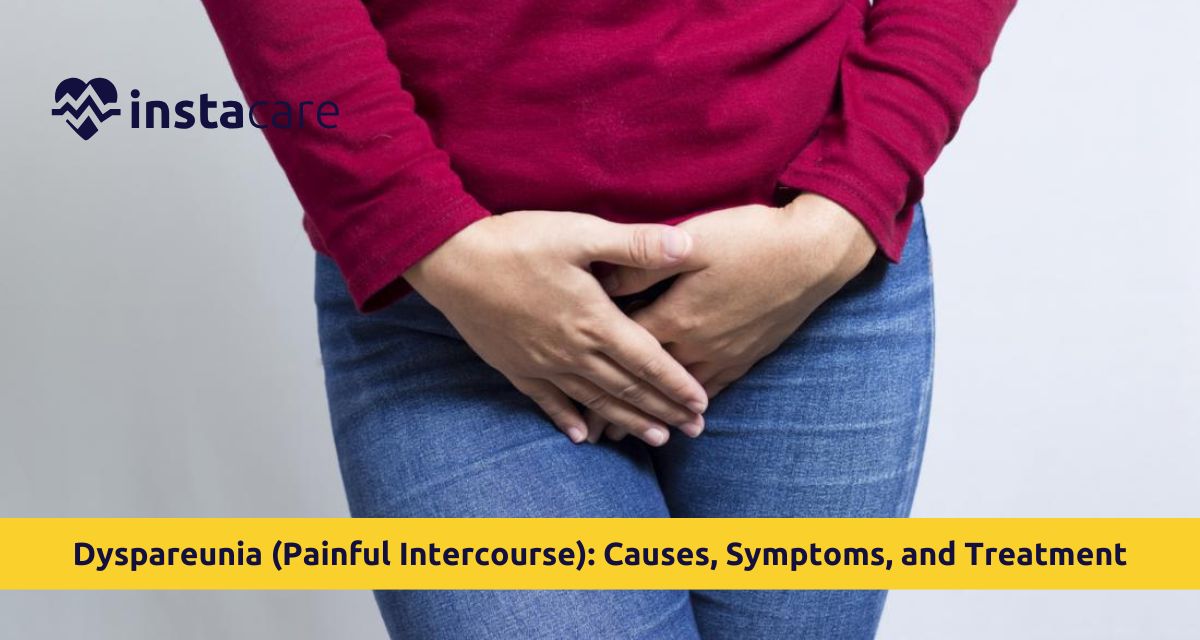What Is Dyspareunia?
Common Causes of Dyspareunia
- Physical Causes: Physiological cause of sexually transmitted disease, yeast infection, or bacterial vaginosis pain is inflammation which causes painful sex. Pelvic pain during sex due to endometriosis is owing to tissue growth similar to lining of uterus outside the uterus. Deep dyspareunia is caused by pelvic inflammatory disease, ovarian cysts, or uterine fibroids. Vaginismus is caused by spasmodic involuntary muscular spasm of vagina to prevent easy penetration.
- Hormonal Causes: Dryness and dyspareunia hand in hand. Dyspareunia and menopause most commonly happens because lower estrogen thins the vagina as well as reduces normal lubrication. Painful intercourse secondary to dryness also happens because of hormonal transition after childbearing, breastfeeding, or some drugs.
- Anatomical Causes: Pathology in the pelvis, radiation, surgery of the pelvis, childbearing episiotomy or rupture of perineum fibrosis, lead to anatomical distortion into being that is the causative agent of painful sex.
- Skin Disorders: Dermatitis of the skin, lichen planus, or lichen sclerosus induce pain and inflammation with sex.
- Psychological Reason: Psychological causes of dyspareunia include sexual abuse, depression, anxiety, or relationship issues. These will cause tension and inability to get stimulated, which eventually appears in the form of pain.
Symptoms of Dyspareunia
- Character of the pain: The pain is burning, sharp, stabbing, aching, or throbbing. Burning or stinging upon first vaginal penetration is typical of superficial dyspareunia. Aching or deep pelvic pressure and with deep thrusts is typical of deep dyspareunia.
- Timing: Pain with penetration alone, intercourse alone, or with orgasm during coitus. Pain is experienced in only a few positions in only a few women.
- Associated Symptoms: Dyspareunia occasionally is related to other rare discharge, pain with other functions such as the insertion of a tampon, urinary symptomatology, vaginal pain during sex, vaginal spotting, or pelvic weight.
- Emotional Consequence: Sexual relationship difficulty, sexual avoidance, sexual fear, and libido decrease normally follow after recurrent painful intercourse.
How Doctors Diagnose Dyspareunia?
- Medical History: Pain's location, duration, onset, description, and severity are questioned in depth. Physician inquires about pregnancy, menstruation, medications, surgery, and psychosocial stressors.
- Physical Examination: Total pelvic examination is employed to establish the presence of signs of infection, anatomic changes, tissue change alterations, or locations of tenderness. Coitus with examination locates pain points.
- Lab Tests: Vaginal infection screen culture. Hormone level test is prescribed in menopausal women.
- Imaging Tests: Ultrasound imaging scans pelvic organs to identify fibroids, cysts, or endometriosis. MRI is restricted to whole imaging in intricate cases.
Read More: Cystitis - A Painful Bladder Infection - Causes Symptoms Treatment
Treatment Options
- Treatment of Infection: Antifungal, antiviral, or antibiotic medicines readily treat the infectious causes of dyspareunia.
- Hormone Therapy: Vaginal estrogen cream, ring, or tablets are administered to treat women for menopausal syndrome and dyspareunia.
- Lubricants and Moisturizers: Silicone- or water-based lubricants reduce sex friction. Vaginal dryness and dyspareunia can be addressed with vaginal moisturizers that increase out-of-sex tissue hydration every day or as needed for several days leading up to intercourse.
- Medications: Transcutaneous lidocaine over the counter is a topically applied local anesthetic that temporarily discontinues focal pain. Pain management or muscle relaxants for neuropathic pain eases pain in some women based on some diagnoses.
- Pelvic Floor Physical Therapy: Physical therapists of the pelvic floor rehabilitate pelvic floor dysfunction, educating patients in relaxing, lengthening, and coordinating to relax and eliminate pain.
- Surgical Therapies: Others will undergo surgery to have endometriosis, cysts, or fibroids removed; have an issue with strange anatomy that must be corrected; or have thick, recalcitrant scar tissue that must be removed.
- Psychological Counseling: Sex therapy, counseling, or cognitive-behavioral therapy treats psychological features of dyspareunia, trauma, relationship factors, and stress management.
Home Remedies and Self-Care?
- Long Foreplay: Professional arousal allows natural lubrication and allows relaxation of the muscles in the pelvis, which minimizes pain when penetrating.
- Communication: Enhanced communication with partners about needs, boundaries, and pain makes healing simpler and intimate scenarios.
- Position Experimentation: Position experimentation provides depth and angle of penetration control and thus can minimize pain.
- Relaxation Techniques: Deep breathing, progressive muscular relaxation, or sex presence reduces muscle tension involved in pain.
- Warm Baths: Warm bath preceding sex relaxes pelvic muscles and can alleviate pain.
Prevention Tips
- Healthy Vagina: Practice good personal hygiene without douching, which destroys healthy bacterial balance. Use cotton underwear.
- Lubricate: Stay well lubricated during intercourse, particularly at hormonal change creating disruption of normal lubrication.
- Early Treatment of Infections: Treat vaginal, urinary tract, or sexually transmitted infections early.
- Regular Medical Checkup: Undergo regular gynecological checkup that picks up conditions early before they become chronic symptoms.
Living with Dyspareunia
- Set Realistic Expectations: Not an overnight cure, at least not for chronic illness. Move along the path of small success.
- Enrich Definition of Intimacy: Make pleasurable non-sexual touch, closeness, and pain control priorities.
- Take Care of Yourself: Continue to return to the doctor if first-line therapies don't work. When to see a doctor for dyspareunia is specific—is routine painful sex ever to be treated.
Conclusion

